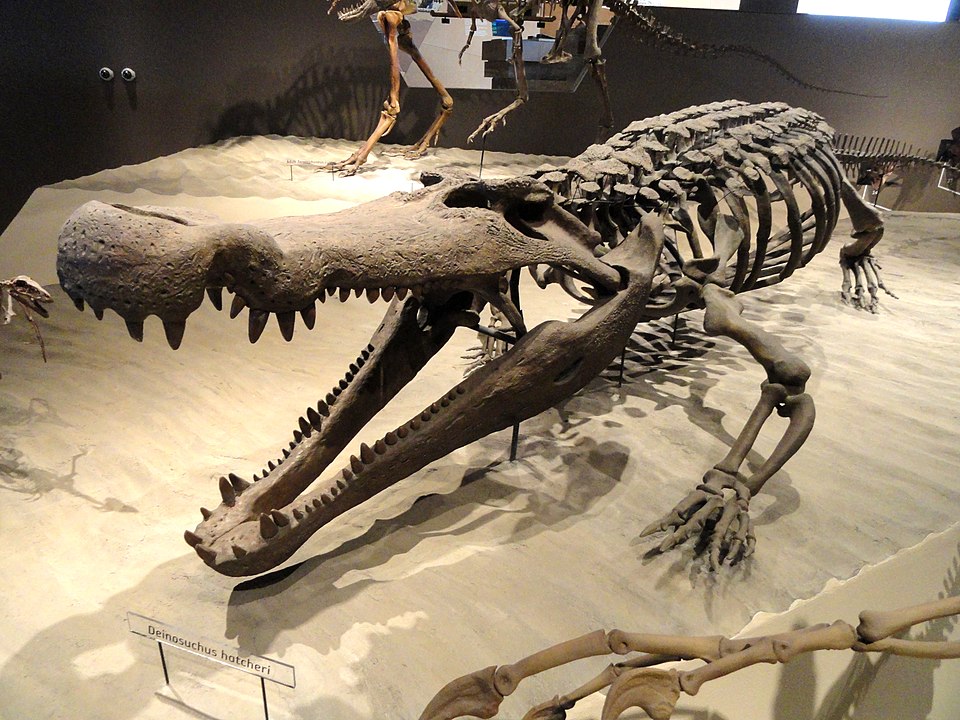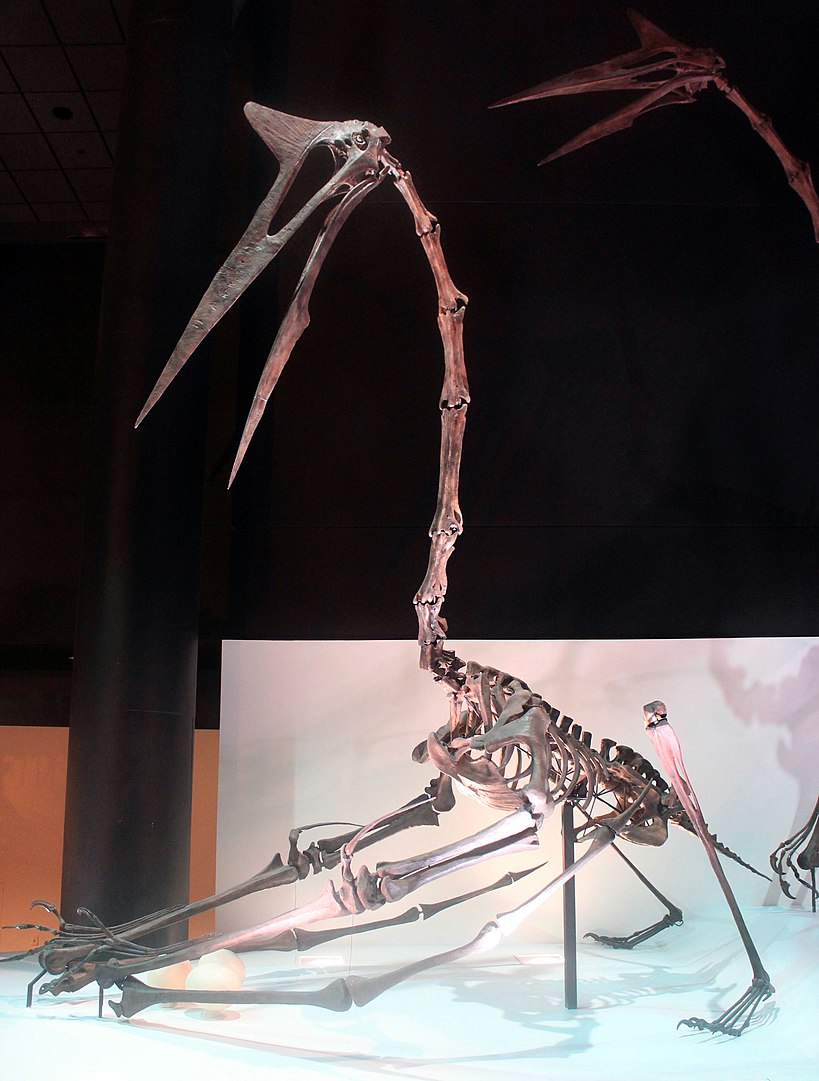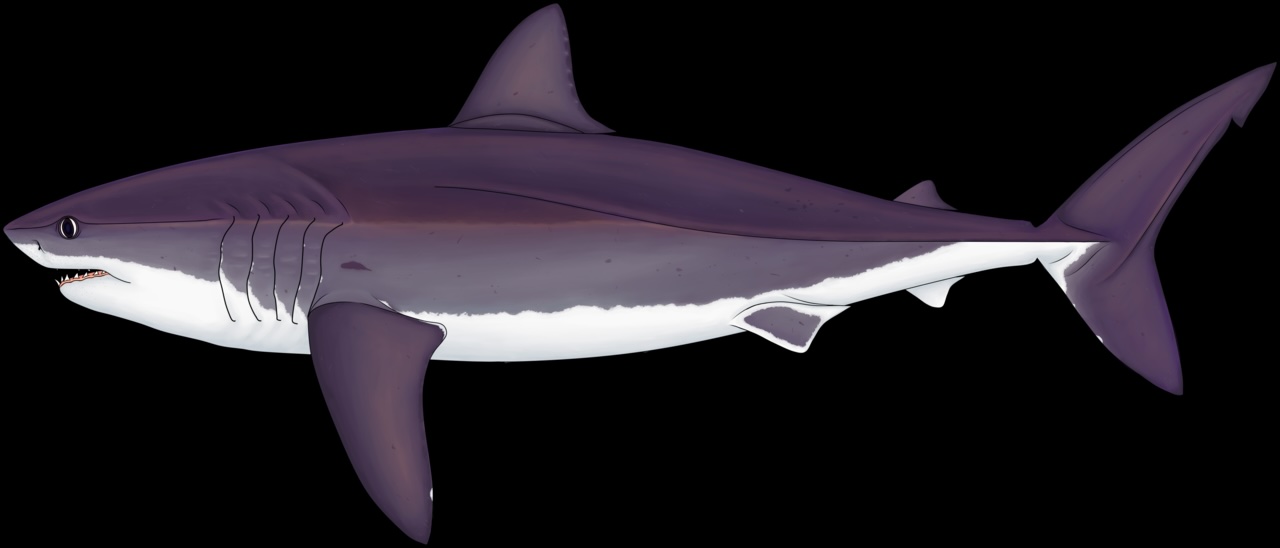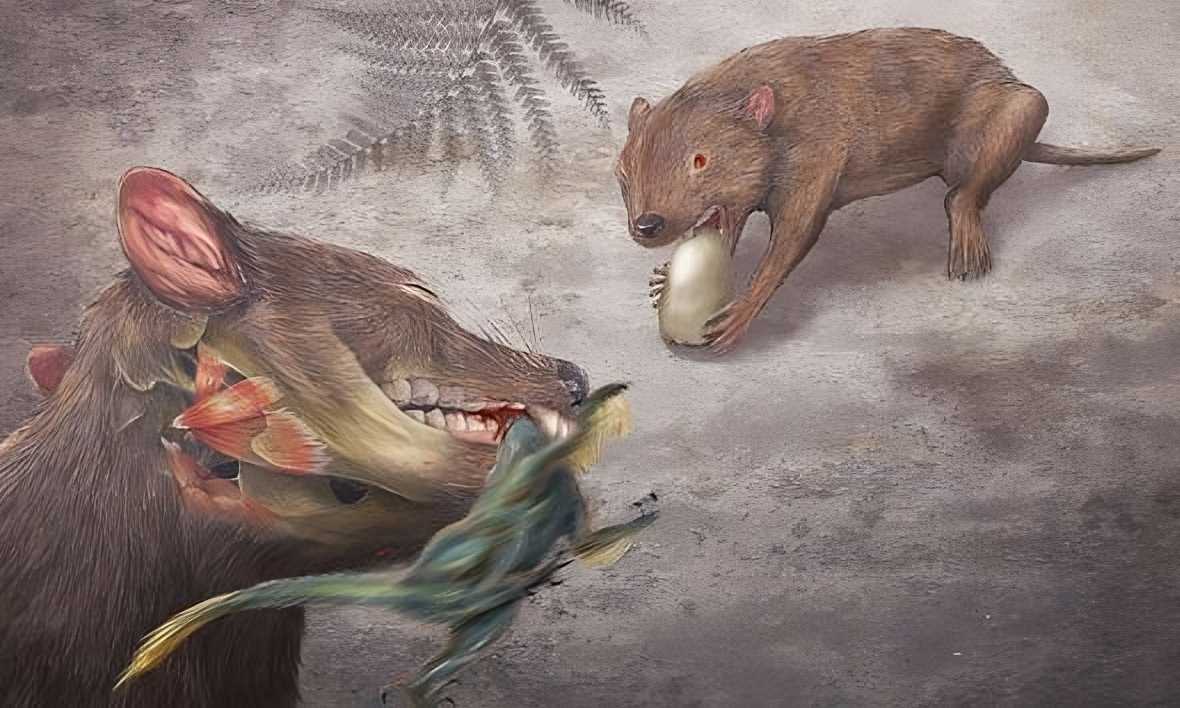Which creatures pursued dinosaurs as prey? Below, you’ll discover a roster of prehistoric animals that indulged in daily feasts of dinosaurs. In the second installment of our prehistoric animal series, we provided you with information about the dimensions of these beings.
Related: Largest Prehistoric Animals
In the forthcoming piece, we shall elucidate the incorporation of a 30-ton dinosaur into the menu of another creature and identify the individuals that ascended to dominance in the apex predator hierarchy during the Mesozoic Era. These prehistoric beings, which feasted upon dinosaurs, are substantiated by either indisputable fossilized remains or indirect indications. Without further ado, allow us to present the grandest and most formidable rulers of the Death League.
Deinosuchus

Existing during the Late Cretaceous Period in North America, approximately 73–80 million years ago, was Deinosuchus, a fearsome predator of dinosaurs. With an average length of 9.5 meters and weighing around 8 tons, this prehistoric crocodile roamed the land, targeting dinosaurs that ventured close to the riverside for grazing. Paleontologists have unearthed hadrosaur (duck-billed dinosaur) bones displaying tooth marks attributed to Deinosuchus. Yet uncertainty surrounds whether these tooth imprints resulted from sudden and stealthy attacks on live dinosaurs or if the crocodile scavenged on the carcasses of deceased hadrosaurs in various ways.
This colossal prehistoric crocodile, serving as a precursor to modern crocodilian hunting strategies, would seize and drag larger dinosaurs into the water, submerging them to their demise. Notably, formidable predators like the fully grown tyrannosaurs Appalachiosaurus and Albertosaurus fell victim to Deinosuchus assaults. In order to subdue such powerful opponents, this dinosaur-eating crocodile used the most effective strategy: luring them into the aquatic environment.
By ensnaring them in the water, Deinosuchus adeptly neutralized these potent foes, showcasing his mastery as a skilled predator of his era.
Repenomamus
Based on the fossils unearthed in China, our understanding reveals that a creature known as Repenomamus existed during the Early Cretaceous Period, approximately 122 to 124 million years ago. This archaic being comprised two identified species: Repenomamus robustus and Repenomamus giganticus. Despite their seemingly modest weight of 11 to 13 kilograms, these animals could be deceptive in appearance. The key to their flourishing within their ecosystem lay in their advanced hunting prowess.
The remains of these mammals, surpassing the size of an average cat, were discovered in association with a juvenile Psittacosaurus. Psittacosaurus, akin to a horned, beaked, herbivorous dinosaur, bore resemblance to the distant precursor of the 12-ton, 9-meter-long Triceratops. Yet, solely relying on these findings, reaching a definitive determination that Repenomamus solely preyed on dinosaurs presents challenges. It remains plausible that the mammal also encountered the carcass of the Triceratops. Regardless of the scenario, it’s unmistakable that these mammals exhibited the capacity to secure their sustenance by preying upon dinosaurs.
Quetzalcoatlus

Bones and remains of prehistoric animals One of the largest flying animals ever, with a 40ft wingspan. Image: Yinan Chen.
Sporting an impressive 10-meter wingspan and weighing around 270 kilograms, one might be inclined to assume that this avian marvel’s culinary preferences were confined solely to river-dwelling fish and select invertebrates.
However, within the prehistoric epoch where size translated into a distinct advantage, Quetzalcoatlus defied expectations by venturing hundreds of kilometers away from the coastal regions of its North American homeland. Contrary to the presumption, these magnificent aerial beings were not limited to aquatic fare. Evidence indicates that they engaged in the pursuit of dinosaurs, a significant component of their ecosystem, including the likes of Alamosaurus. The foundation of this hypothesis rests upon fossil remnants of the immense flying reptile itself, along with discernible bones attributed to Alamosaurus. It’s important to note that their focus likely fell on juvenile Alamosaurus, rather than their fully grown counterparts, as potential prey.
Cretoxyrhina

In the annals of the Late Cretaceous Period, spanning approximately 73 to 107 million years ago, an extinct genus of shark emerged—one that found its taste for dinosaurs. This awe-inspiring predator, dubbed Cretoxyrhina, bequeathed to us remarkably well-preserved fossils unearthed on the Kansas terrain during the late 1800s. Then, in 2005, a fortuitous discovery was made by a zealous amateur fossil seeker in the same vicinity that once cradled the remains of this sizable shark. His find, a collection of fossilized tailbones, bore a curious resemblance to the incisor impressions typically associated with a shark’s culinary endeavors.
However, under the lens of meticulous scrutiny, these dental imprints divulged a deviation from the established pattern of the mightiest modern-day sharks, casting an enigmatic shadow. This intriguing dissimilarity sparked an investigative odyssey, ultimately revealing that these enigmatic tooth marks could be attributed to none other than Cretoxyrhina itself, the sovereign ruler of ancient seas during that epoch. Recognized also as the Ginsu Shark, this entity dispersed its fossil legacy globally, with abundant finds concentrated in the western aquatic realms of North America.
Sanajeh

When compared to the colossal proportions of the heavyweight Titanoboa, Sanajeh’s measurements might not inspire the same sense of awe. Spanning a mere 3 meters in length, this ancient snake exhibited a remarkable slenderness that further accentuated its dimensions.
Nevertheless, what sets apart this creature’s predatory methodology is its uniqueness. A dedicated pursuer of dinosaurs, Sanajeh adopted a distinctive approach. It would diligently scour the environs for dinosaur nesting grounds, where it would execute a twofold strategy. It could directly lay claim to the eggs themselves or, intriguingly, exhibit patience, lying in wait for the unfortunate hatchlings to make their debut into the world. At that critical juncture, it would strike, capitalizing on the vulnerability of the newborns.
How have we gleaned such insight into this ancient drama? The answer resides in the discovery of a titanosaur egg fossil discovered in close quarters to a coiled Sanajeh specimen, both in the vicinity of India. Adding another layer of evidence, a fossilized titanosaur hatchling, measuring an impressive 50 cm in length, was unearthed and positioned in immediate proximity to this scene.
Didelphodon

By the standards set forth in the Mesozoic era, this particular species stands as a remarkable example of size, with the most substantial skull fossil extending to approximately 13 centimeters in length and weighing an estimated 5 kilograms. In the course of its evolutionary journey, this creature underwent adaptations that cast it in the role of a predator. A strong jaw structure that supported its powerful bite and elongated, grooved teeth were essential to its predatory prowess. It’s through these formidable attributes that it found its place within the intricate tapestry of prehistoric ecosystems, with dinosaurs occupying a pivotal position in its dietary preferences.
Examinations delving into the architecture of its skull and jaw have unveiled a startling revelation: Didelphodon commanded the most formidable bite strength within the realm of Mesozoic mammals. In fact, their bite potency stood shoulder to shoulder with the renowned “bone-crushing” dogs of the later Cenozoic era, surpassing even the contemporary might of today’s hyenas. Scientific inquiry unveils a predilection for consuming diminutive vertebrates, a culinary inclination reminiscent of the diet often comprised of newborn dinosaurs.
Mosasaur
Inhabiting the Late Cretaceous epoch, spanning approximately 82 to 66 million years ago, Mosasaurs emerged as captivating denizens of the ancient oceans, belonging to the realm of marine reptiles. The debut of their existence in the scientific sphere traces back to the late 18th century, when the earliest known fossils of these enigmatic creatures surfaced along the European continent’s northwest coast and in proximity to the Dutch city of Maastricht.
Within a cinematic frame from Jurassic World, an evocative tableau unfolds: a Mosasaur, with deliberate precision, submerges an Indominus rex into the depths of the waters. While an approximate tenfold size disparity separates the largest Mosasaur remains from the fictionalized Indominus rex, the essence of the portrayed event resonates remarkably close to actuality. A compelling body of evidence tentatively implies that Mosasaurs indeed assumed the role of dinosaurs’ predators. Their dietary habits, it seems, likely encompassed dinosaurs that found themselves inadvertently ensnared within the aquatic domain during tumultuous storms, deluges, or migrations. A particularly robust pillar of substantiation stems from the historical records indicating that even the prehistoric shark Cretoxyrhina, coexisting with Mosasaurs during the same era, counted dinosaurs among its culinary preferences.
Upon scrutinizing the geographical landscapes that cradle Mosasaur fossils, it emerges that these colossal maritime titans showcased a proclivity for patrolling open waters near the ocean’s surface. This propensity for strategy might have developed in response to the fierce competition from other leviathans of the deep, such as Prognathodon and Tylosaurus. The unearthing of fossil fragments intermingled among Mosasaur remains, attributed to Tylosaurus, lends credence to this notion, bolstering the hypothesis of an ongoing aquatic struggle for supremacy.
Tapeworms
Dinosaurs navigated not only the perils of their external environments but also contended with pernicious internal adversaries. Among these covert assailants were tapeworms, parasitic organisms that set their sights on the very dinosaurs they coexisted with. A wealth of remarkably preserved fossils from the Mesozoic era provides a window into these ancient parasites.
This connection extends even further, as their modern-day counterparts, the avian and crocodilian descendants of dinosaurs, showcase comparable coiled intestinal structures to those of their distant ancestors. It’s a poignant testament to the enduring continuity of these intricate physiological features.
Imprinted within fossilized excreta, known as coprolites, emanating from carnivorous dinosaurs, lies an illuminating revelation: evidence of these tenacious organisms. Among these fecal time capsules, tapeworms have been unearthed, intertwined with nematodes and trematodes. These fossilized coprolites unveil a mesmerizing tableau: tapeworms that attained staggering lengths, stretching to the extent of hundreds of meters.
As to the ultimate impact of these parasitic interlopers on their hosts’ fate, a shroud of uncertainty lingers. While their presence within the gastrointestinal domain of these dinosaurs is incontrovertible, whether these parasites played a contributing role in the decline of their hosts remains an enigma, suspended within the unfathomable corridors of time.
References
- Wilson, J.A.; Mohabey, D.M.; Peters, S.E.; Head, J.J. (2010). Benton, Michael J. (ed.). “Predation upon Hatchling Dinosaurs by a New Snake from the Late Cretaceous of India”. PLOS Biology. 8 (3): e1000322. doi:10.1371/journal.pbio.1000322.
- Rose, Kenneth David (2006). The beginning of the age of mammals. Baltimore: JHU Press.
- Occurrence of Mosasaurus hoffmannii Mantell, 1829 (Squamata, Mosasauridae) in the Maastrichtian Phosphates of Morocco